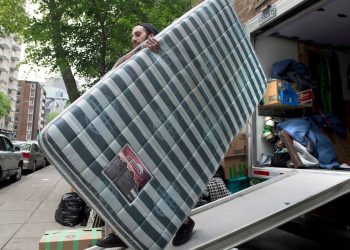It’s an amazing query that I usually hear from mother and father, who’re understandably frightened concerning the rising prices of upper schooling. The worth tag for tuition is steep—and getting steeper. For the 2024/2025 college 12 months, the common undergraduate tuition payment in Canada for home college students was $7,360. That doesn’t embrace bills like textbooks, lodging, meals and transportation. With the price of dwelling persevering with to rise throughout Canada, households are rightfully involved about the most effective methods to avoid wasting and make each greenback depend—particularly in relation to placing cash apart for his or her youngster’s schooling. So, let’s check out what would work finest for you.
As with every kind of investing, it’s good to start out ASAP. Households can set themselves up for achievement by beginning to save whereas their children are younger—nonetheless in diapers, even. And, if in case you have an older child and also you’re simply beginning an RESP now, maintain studying. That is related to you, too.
Possibility 1: Registered schooling financial savings plan (RESP)
An RESP is the one account designed particularly to assist households save for post-secondary schooling. It’s a kind of registered account, that means that it’s registered with the federal authorities, and the cash and investments held inside it develop tax-sheltered. Over time, that may make an enormous distinction to your financial savings. The perfect half is, while you withdraw your funds from the account, they’re taxed within the palms of your beneficiary, usually leading to little-to-no taxes being utilized to your financial savings if executed strategically.
One other enormous RESP profit: It’s the one account the place you may get government grants—free cash to your youngster’s schooling—if you happen to correctly plan your contributions.
The large one is the Canada Training Financial savings Grant (CESG). The federal government will match 20% (as much as $500 in a given 12 months) in your first $36,000 of RESP contributions; for every youngster, the utmost CESG is $7,200. Low-income households are eligible for a further $2,000 within the type of the Canada Studying Bond (CLB), and fogeys residing in British Columbia and Quebec have entry to extra grants, too.
With an RESP, each youngster has a most contribution restrict of $50,000. Over the plan’s 35-year lifetime, it will possibly develop far past that mark by authorities grants and funding earnings. In case you have a couple of youngster, you may also open a household RESP and mix and divide the funds as wanted between them. In case your kids don’t find yourself going to highschool, you possibly can switch your RESP belongings into your RRSP (apart from the grants, which can return to the federal government), if in case you have contribution room.
Possibility 2: Registered retirement financial savings plan (RRSP)
The RRSP is one other kind of registered account, created to encourage Canadians to avoid wasting for retirement. Your RRSP contributions are deducted out of your taxable earnings, and your financial savings and investments can develop tax-sheltered contained in the account, till you withdraw them. For many Canadians, that occurs in retirement, after they’re in a decrease tax bracket.
The federal government presents a program, the Lifelong Learning Plan (LLP), that enables account holders to borrow as much as $20,000 from their RRSP to cowl schooling prices after which repay it over the subsequent 15 years. Nonetheless, you possibly can solely use the LLP to pay to your personal schooling or that of your partner or common-law associate. So, utilizing RRSP funds for a kid’s schooling means you’ll must pay earnings tax on the withdrawals at your present marginal tax rate—which is the other of what you need to have occur with a registered account—in addition to undergo a setback to your retirement financial savings.










